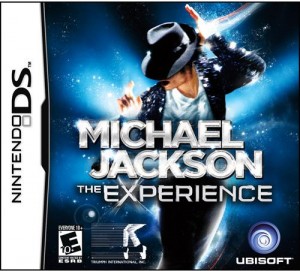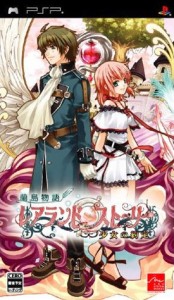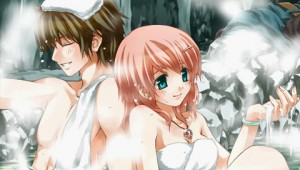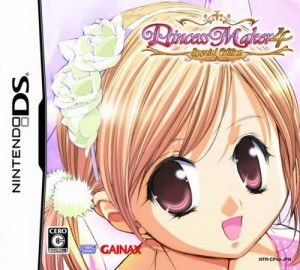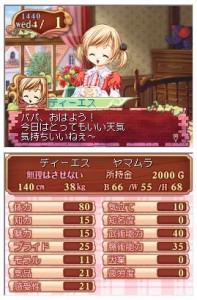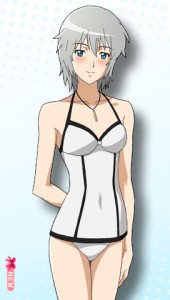 I play a lot of games from start to finish. I play even more from start to whenever-I-get-tired-of-it. However every once in a while (…actually pretty darn often) there’s a game that I try to play only to give up very quickly for one reason or another. I usually don’t even mention them here firstly because I have nothing to say, and secondly because I have better games to write about, but I’ll list a few recent victims of this practice here.
I play a lot of games from start to finish. I play even more from start to whenever-I-get-tired-of-it. However every once in a while (…actually pretty darn often) there’s a game that I try to play only to give up very quickly for one reason or another. I usually don’t even mention them here firstly because I have nothing to say, and secondly because I have better games to write about, but I’ll list a few recent victims of this practice here.
Remindelight (DS) – Long intro, cliched story about rescuing sister from forces of evil, meh graphics, massively squashed-up text that’s incredibly difficult to read, terrible battle system that consists of slashing randomly at the screen, etc. I don’t think I got even an hour into this one.
Houkago Shounen (DS) – One of the games you have to be Japanese to appreciate, I guess. It follows the life of a little boy in 80s Japan as he goes to school, comes home, plays with his friends and tries to avoid moving away with his family at the end of summer. It was heartwarming but, frankly, extremely dull, and none of the mini-games he plays seemed like any fun. Instead of me playing a game about him, he needs to play the game about my childhood.
Astonishia Story (PSP) – I played about an hour last week, and it reminded me of Tactical Guild in terms of sheer terribleness. Even the samey-looking bad guys, walk-up-and-attack battle system, forced humor and paper-thin characters are similar. I could grow to love this game, I know I could. But I’ve already played one so-bad-its-good game this year, so AS will have to wait till at least 2012 to get its turn. If ever.
Inugami DS, Allison & Lillia DS – Not games, just books put on the DS by publishers out to make a few extra bucks. I thought reading light novels on the DS might be more fun than reading scanned copies on the screen (Buy? what is this “Buy” you speak of?), but this probably only applies to books that are worth reading in the first place, i.e. NOT Inugami.
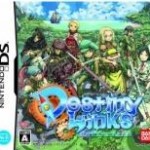 Destiny Links (DS) – Shame, it’s a really promising game. Destiny Links had lots of elements I love in an RPG (quests, item crafting, world exploration, multiple character scenarios to play through), but I just couldn’t get past the pure action RPG battle system. I can handle ARPGs with level ups because then I can just grind till I’m strong enough, but systems that require me to actually show some skill and dexterity are a no-go. I managed to finish the first island, then threw my hands up after that. The tiny characters and the mostly-hiragana text didn’t help either.
Destiny Links (DS) – Shame, it’s a really promising game. Destiny Links had lots of elements I love in an RPG (quests, item crafting, world exploration, multiple character scenarios to play through), but I just couldn’t get past the pure action RPG battle system. I can handle ARPGs with level ups because then I can just grind till I’m strong enough, but systems that require me to actually show some skill and dexterity are a no-go. I managed to finish the first island, then threw my hands up after that. The tiny characters and the mostly-hiragana text didn’t help either.
Mimana Iyar Chronicle (PSP) – Plays like Tales of the Tempest, feels like a Grandia II rip-off. If I had a dollar for every grumpy mercenary with a chip on his shoulder… I made it to the first boss, who promptly wiped me out. Now I either have to grind or actually get the hang of the battle system, neither of which appeals to me right now. Dumped until further notice.
The World Ends With You (DS) – I’m giving it my best shot, I really am, but… It’s not doing anything for me. I’m just getting more and more stressed by the moment. Not only is the “story” not going anywhere I care to follow but also the battle system is all over the place. Which part of this is supposed to be fun? If it’s the 7-day Lockdown in Tokyo thing, I already did that in Devil Survivor, thank you. And can I get another couple of dollars in here for the “Everybody just leave me alone” protagonist? I haven’t thrown in the towel yet, but…
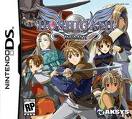 Hoshigami Remix (DS) – From the makers of my beloved Stella Deus, but this one is a wash. The battle screens make me claustrophic and the battle pace is downright catatonic. The characters on the screen are tiny (I complain about tiny characters because I have bad eyes, true story), the character designs are fuzzy and awful, the story is boring, the music is unremarkable, etc. Basically everything that can be wrong with a game is wrong with Hoshigami Remix. But I like SRPGs enough that I’ll probably play it on and off for a while to come. I especially like the Tower of Trial being unlocked right at the beginning. Maybe I’ll even finish it, eventually.
Hoshigami Remix (DS) – From the makers of my beloved Stella Deus, but this one is a wash. The battle screens make me claustrophic and the battle pace is downright catatonic. The characters on the screen are tiny (I complain about tiny characters because I have bad eyes, true story), the character designs are fuzzy and awful, the story is boring, the music is unremarkable, etc. Basically everything that can be wrong with a game is wrong with Hoshigami Remix. But I like SRPGs enough that I’ll probably play it on and off for a while to come. I especially like the Tower of Trial being unlocked right at the beginning. Maybe I’ll even finish it, eventually.
Harvest Moon Boy & Girl + Hero of Leaf Valley (PSP) – I shouldn’t have to repeat how much I love Harvest Moon games, but both original versions on the PS2 were a bit of a failure for me (I liked Innocent Life though, for some strange reason). I don’t know what I expected from the PSP remakes, but what I got was a whole lot of nothing. Hero of Leaf Valley seems to have a bit of potential – I did play quite a bit of Save the Homeland – but Boy & Girl is definitely out.
Breath – Toiki wa Akaneiro (DS) – I probably haven’t mentioned this before, but I don’t really like visual novels. Every couple of months I give one a shot just to see what’s going on, but it never works out. Breath would have been bad enough on its own, but the existence of several stupidly irritating games that force you to blow into the DS mic repeatedly was the last straw.
 Hiiro no Kakera (DS) – Like I said, I don’t like visual novels. I gave this a shot because it’s one of the few otome ‘games’ for the DS, but I sorely regretted it. None of the male character designs appealed to me. The main character was whiny, ungrateful, stubborn, bitchy and mean. My dream was to lead her to a painful, ugly death, but I quit long before I got the chance. The story seemed to have potential, but every single scene, no matter how petty, dragged on for ages and ages so I gave up. This is a feature of all visual novels, btw, which is part of the reason why I don’t like them.
Hiiro no Kakera (DS) – Like I said, I don’t like visual novels. I gave this a shot because it’s one of the few otome ‘games’ for the DS, but I sorely regretted it. None of the male character designs appealed to me. The main character was whiny, ungrateful, stubborn, bitchy and mean. My dream was to lead her to a painful, ugly death, but I quit long before I got the chance. The story seemed to have potential, but every single scene, no matter how petty, dragged on for ages and ages so I gave up. This is a feature of all visual novels, btw, which is part of the reason why I don’t like them.
Berwick Saga: Tear Ring Saga series (PS2) – Gave up right in the middle of the first mission. I love SRPGs, but the hexagonal model was too confusing and the battles were hard. It would probably have turned out well if I’d pushed through to the end, but it came at a time when I was up to my nose in other SRPGs, so it just couldn’t compare. I looked around to see if it had gotten stellar reviews or anything, but “meh” seemed to be the general response so I dumped it.
Legend of Heroes I & II (PSP) – Nothing wrong with them, they’re just boring. I should have played them 15 years ago along with BoFII and Lufia I, then they’d have fit right in. I tried both LoH I & II in turn, but I think I’m going to have to save them for when I’ve run out of other PSP RPGs to play. Gotta say, I love Falcom’s character designs though.
Now back to the stuff that is working out. I really need to get off my butt and just finish Saigo no Yakusoku no Monogatari and three or four other games I’m almost done with but never got round to posting about.
